

Lights, camera and ... lanternsEverywhere you see children and adults walking around with colourful lanterns -- fish are a favourite design -- lit by candles or battery-operated lights. It is one of the nicest holidays on the lunar calender, not least because the long heat of summer begins to wane the day after the festival -- really. Traditionally you climb to the highest spot you can find to watch the full moon, although you'll always find a sea of people on the beaches. This year there's a lantern exhibition at the Cultural Centre in Tsim Sha Tsui called "The Rhapsody of Hong Kong Memories." The Leisure and Cultural Services Department tells us that it "depicts the daily lives of Hong Kong people since the 1960s. It is a collection of scenes of old Hong Kong, bringing back cherished memories of those days." I've tried to photograph these lanterns without too many people around, so I'll tell you that the figures are about human-size, some larger, some smaller. And now for the lights, beginning with a giant rabbit, of course ... and just under his nose, a letter-writer ... |

| People who couldn't read or write would dictate their messages to a letter-writer. And since his services are still required, you can find them on Temple Street in the Yau Ma Tei area in the evenings. |
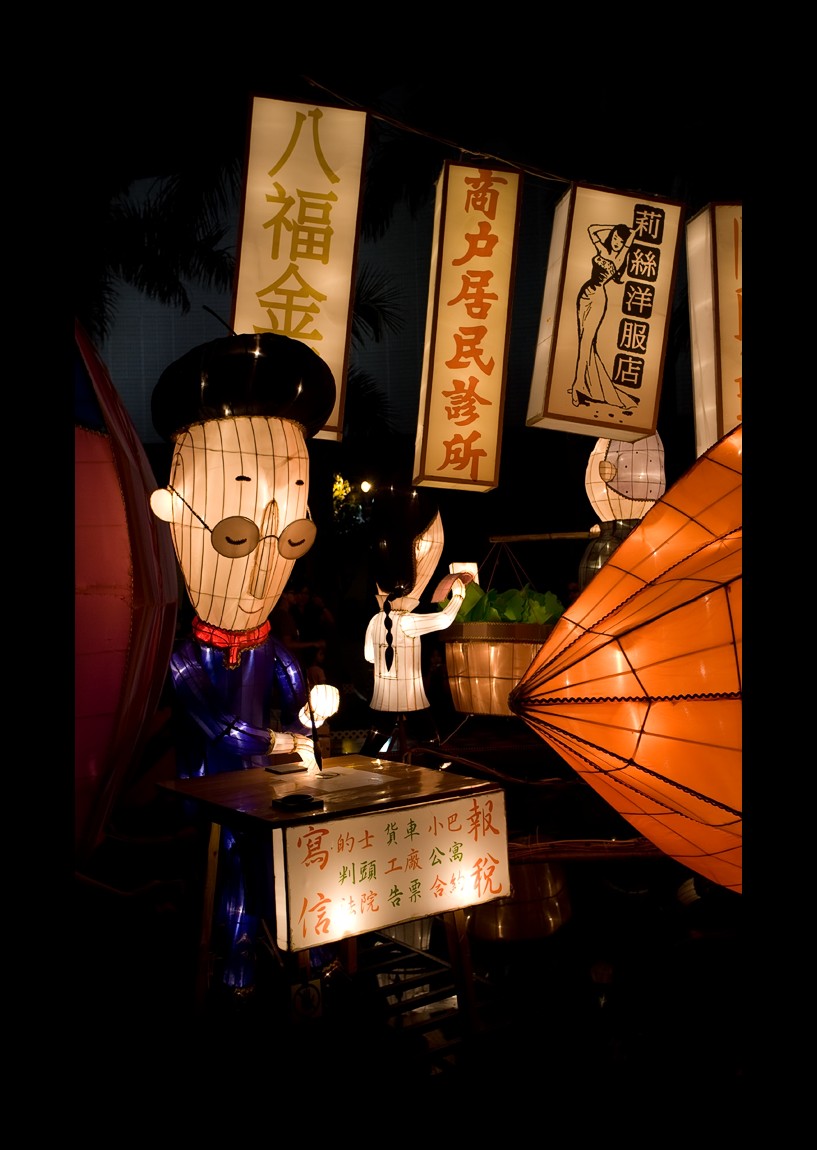
| The big orange thing is a giant starfruit -- a popular design for lanterns. A Chinese friend tells me she didn't have enough money as a child to buy one, so she had to buy the cheap ones. |
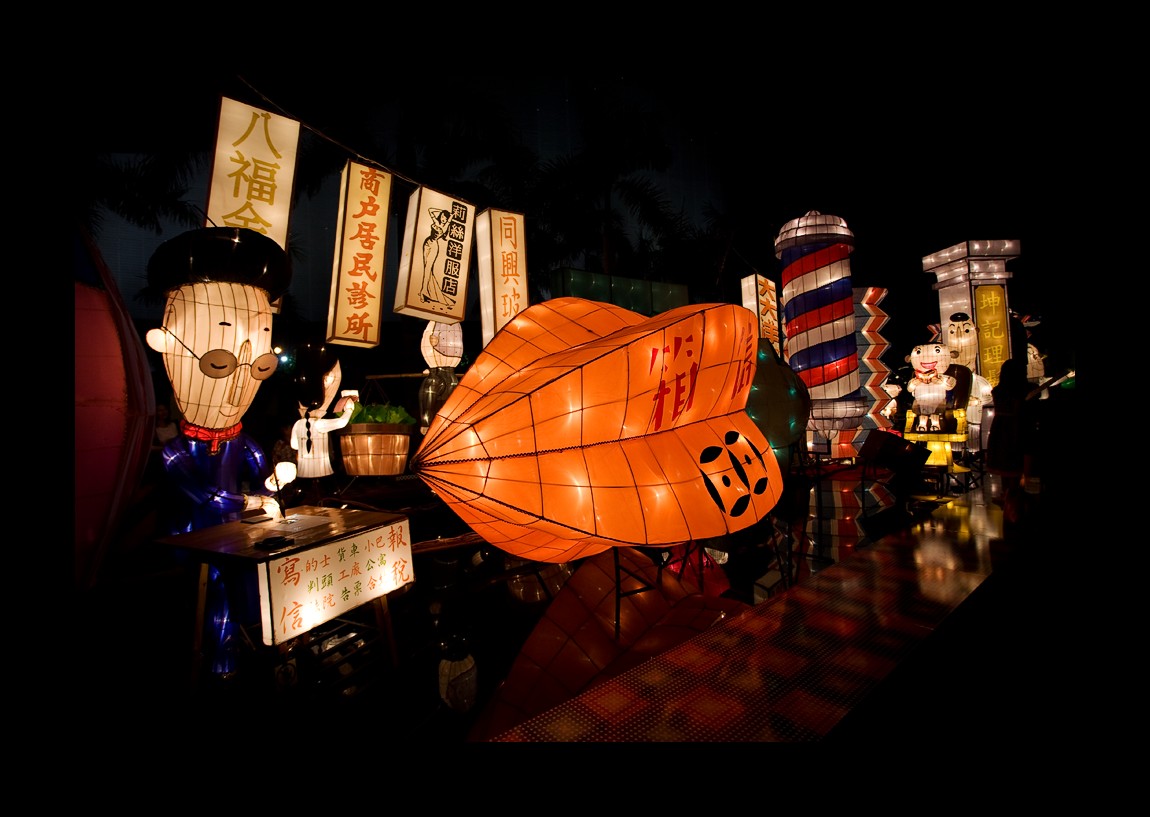
| And by cheap ones, I mean the small, accordion lanterns this man is hanging on racks. They're still being made today -- I know because we hang them on our terrace from the frangipani, bougainvillea and the two papaya trees ... in addition to the more expensive fish, of course. |
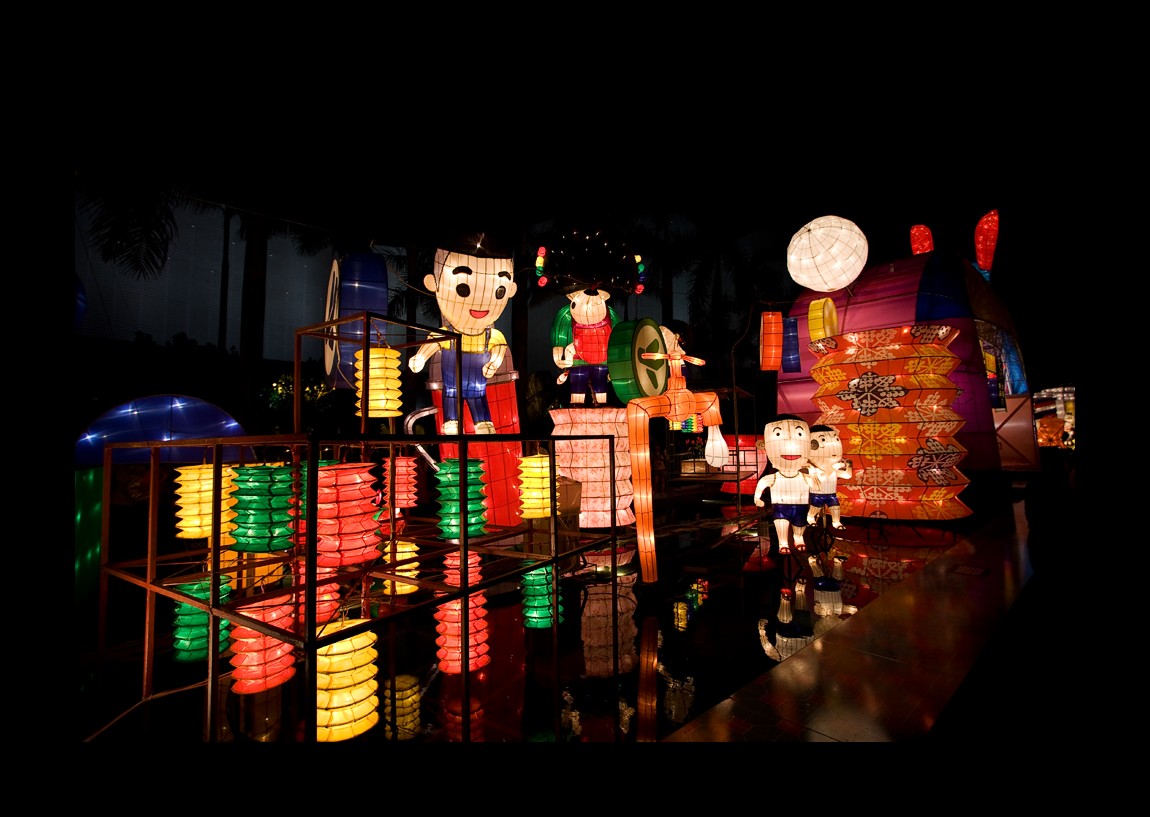
| The water pipe with a single drop of water is an artistic nod to the chronic water shortages of the period. The joke was that if China wanted to take over Hong Kong, they wouldn't send troops -- they would simply cut off the water supply. They were and are Hong Kong's main source of water. Behind the faucet is the famous red vacuum bottle with glass insert (don't drop it) -- they were everywhere, even into the 1980s. Go to any modest Hong Kong or China hotel and you were sure to find one on your bedside table. As to why the two guys in shorts and singlets are features, I can only guess it's because that was a popular look that endures today -- the vests are especially eye-catching when they're partly rolled up over bulging male midriffs. |
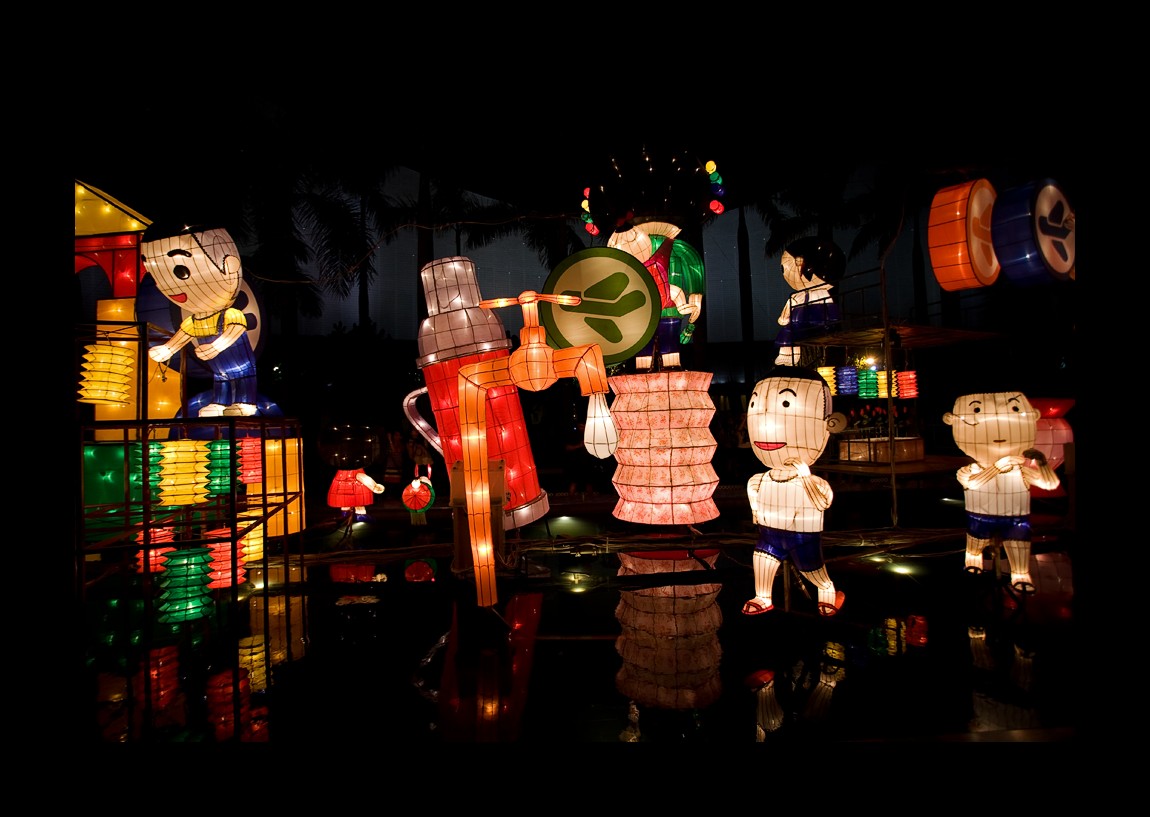
| Then there's the barber with his open-air chair where you could get a haircut while everyone watched -- also still available in some parts of this metropolitan city. Behind the chair is a Godzilla-sized version of one of the cheap, accordion lanterns. |
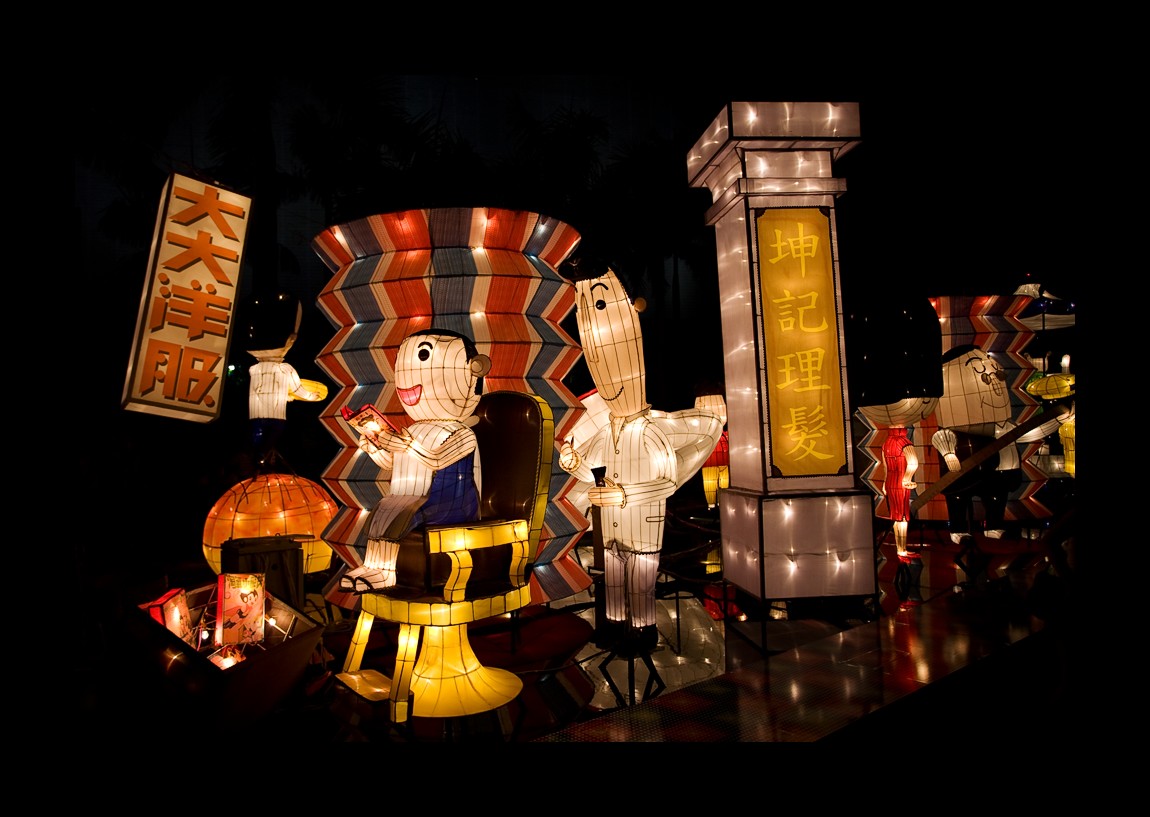
| Policemen at the time directed traffic from covered podiums in the middle of busy intersections. The green guy to the left is the famous Lap Sap Chung -- Hong Kong's green, polka-dotted, masked version of a litterbug -- who starred in the government's incredibly amateurish anti-litter campaigns in the early 1970s. I don't think he did much for the city's cleanliness, but he's become a memorable cultural icon. |
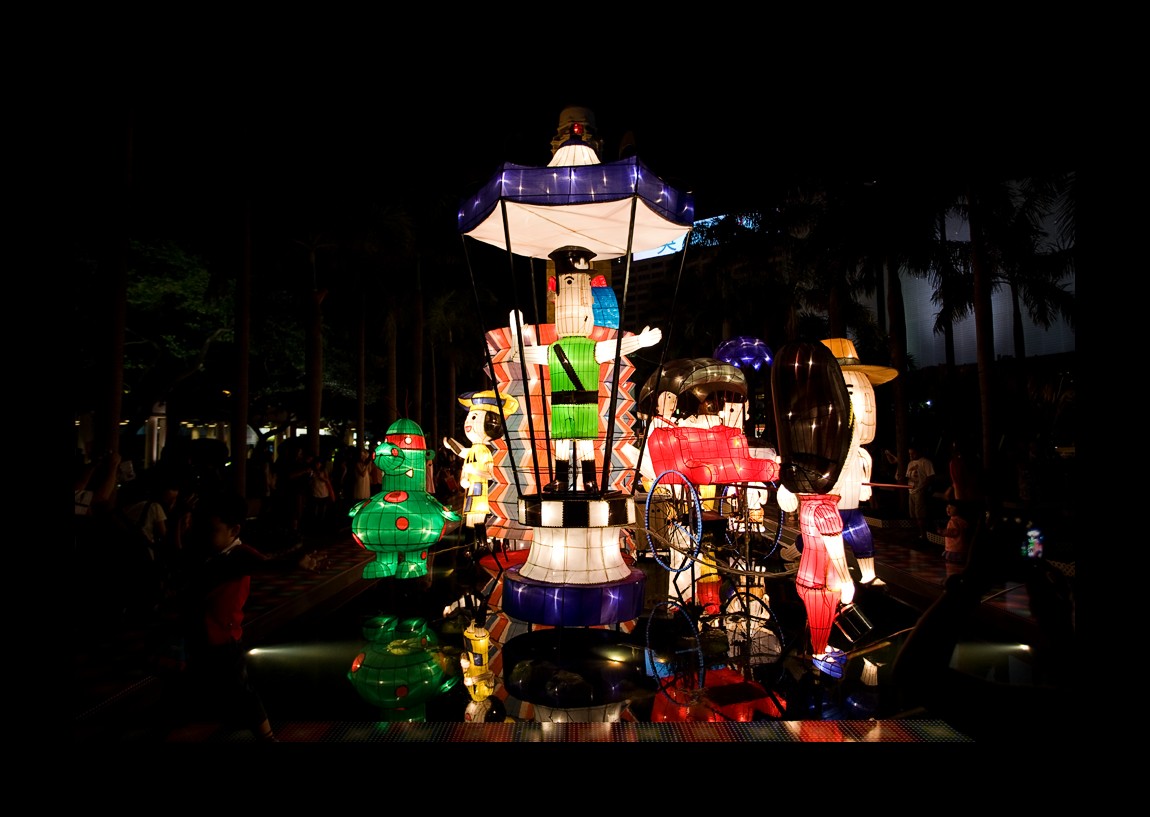
| Here's the classic rickshaw which was regularly plying the streets when I first arrived in 1967. By 1985, the few remaining rickshaw owners languished at the Star Ferry concourse on Hong Kong Island as a tourist attraction for snapshots only -- and even they have finally disappeared through attrition: the government stopped issuing rickshaw licences years ago. |
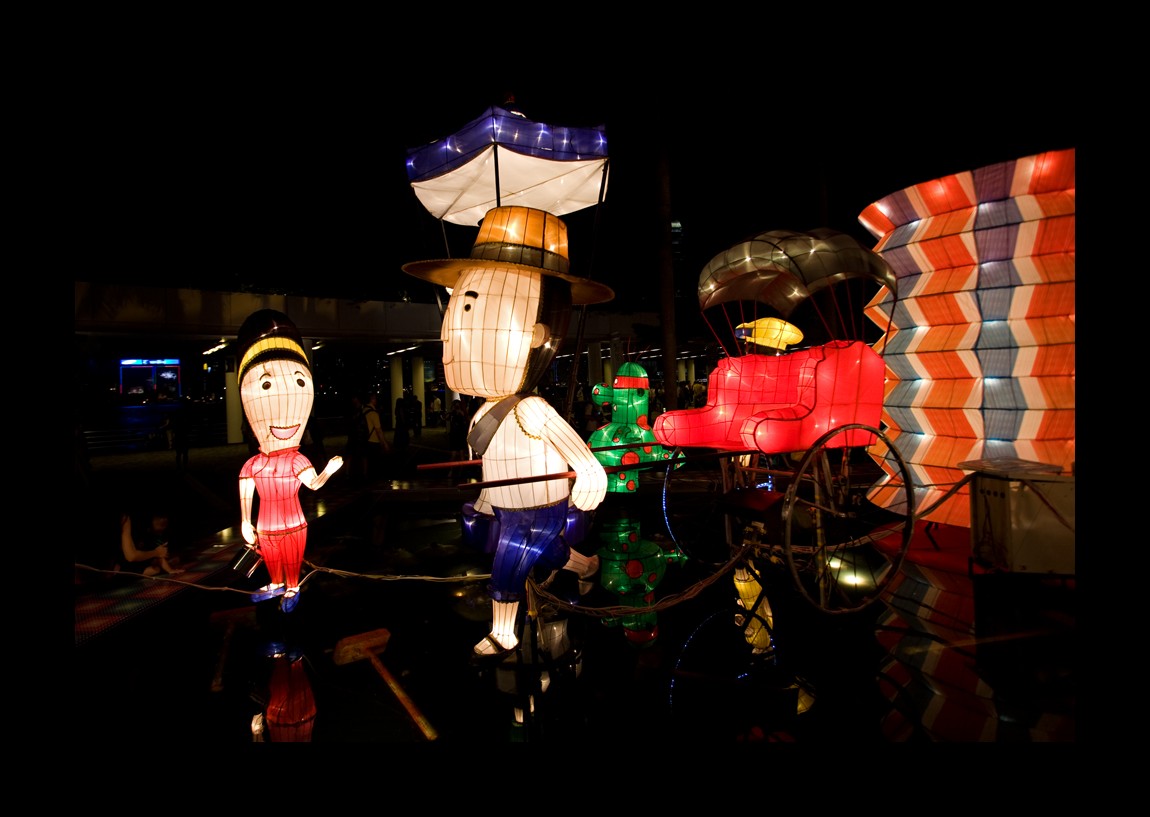
| On to a vegetable stall -- and wet markets with their huge and beautifully arranged displays of fruits and vegetables are still a feast for the eye and one of the delicious wonders of Hong Kong. |
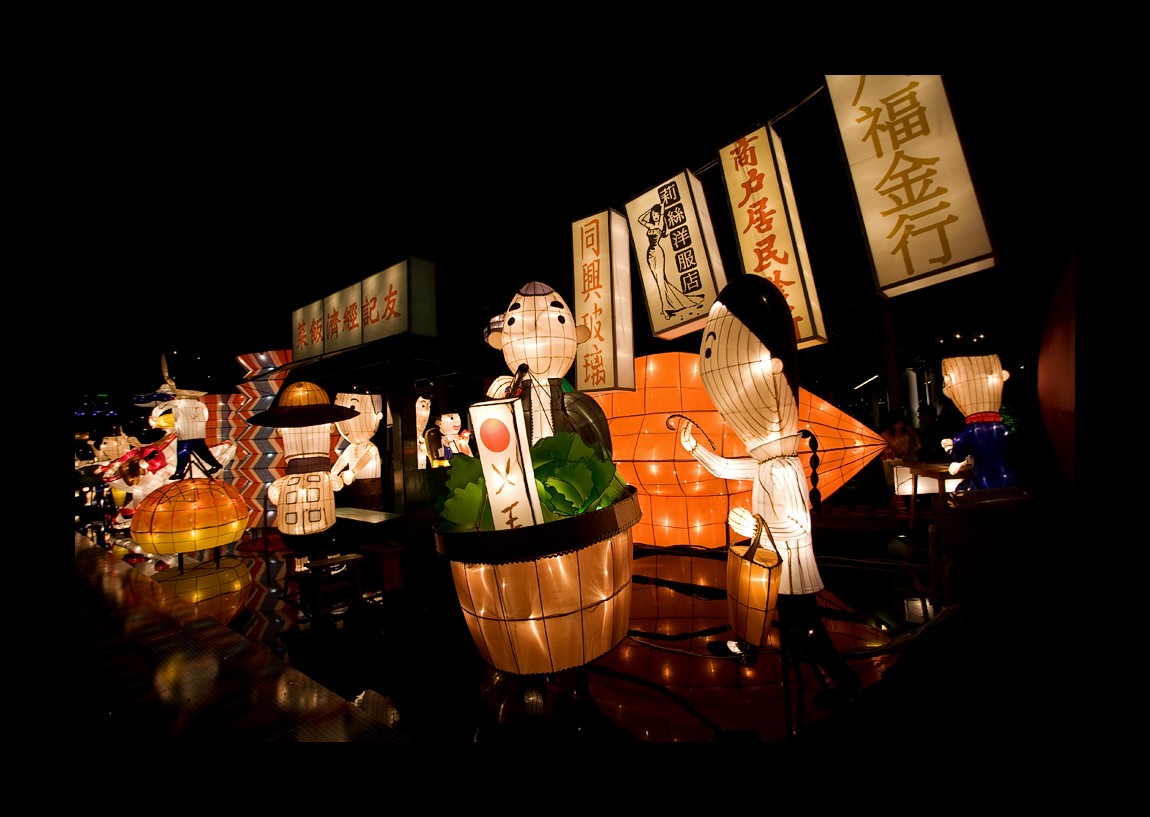
| And finally to children skipping rope and playing hopscotch in an era when childhood pastimes were simpler than they are today. |

Only with the passing of time have some of these hardships of daily life taken on a nostaligic glow and become "cherished memories" -- perhaps because we've survived them, or maybe because we don't have to live them anymore.   Special thanks to Leo Tang Sung-fong, the Hong Kong designer of this exhibition -- he did a brilliant job. |